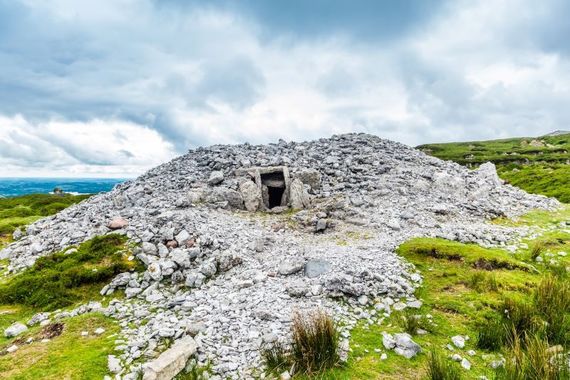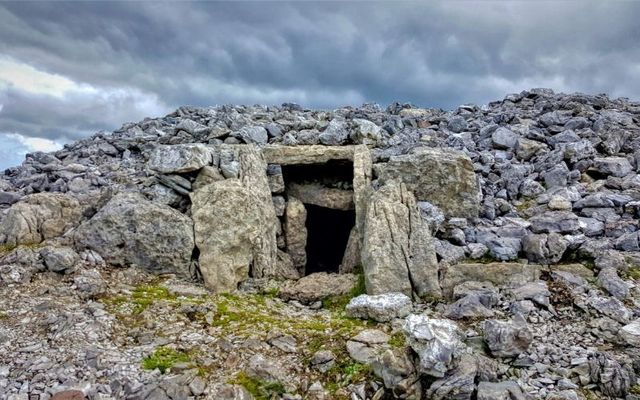Authorities, including the National Monument Service and Office of Public Works, have denounced the vandalism carried out on the fragile ancient burial tombs over the weekend.
The vandalism of the neolithic ancient tombs of Carrowkeel, near Castlebaldwin in County Sligo, over the weekend has been condemned by authorities as "mindless". The police have confirmed that forensic examinations are being carried out and the investigation into the perpetrators is ongoing.
This extraordinary archaeological site is an intricate network of 14 passage tombs, built between 3200 and 2400 BC. The history and significance of the Carrowkeel site are profound. These prehistoric monuments offer a window into the rituals, beliefs, and culture of the Neolithic people who inhabited the region thousands of years ago.
Graffiti was etched into various stones on the passage tombs and the entrance stone to one of the tombs was dislodged. The ancient tombs are under state guardianship and are open to the public. However, the National Monument Service (NMS) has confirmed that they could consider closing public access to sites after this vandalism.
The National Monument Service condemned the attack as a "wanton act of vandalism" in a statement.
They added that "such interference is a serious offense and can lead to significant penalties being imposed."
The NMS said that protecting Carrowkeel is especially challenging as they are located in such remote rural areas.
They stated that "Public support is essential in order to foster greater understanding and appreciation of the need to conserve such an integral part of Ireland’s historic environment."
I went to visit the Carrowkeel passage tombs in Co. Sligo yesterday evening, and unfortunately I’m very sad to say what I found was the worst vandalism I have come across at any megalithic site in the last twenty years. A stone forming the entrance to Cairn H was knocked over 1/2 pic.twitter.com/5SMZfkxIsY
— Ken Williams (@shadowsandstone) October 15, 2023
Climbing on passage tombs or accessing them without permission is strictly prohibited and dangerous.
The Office of Public Works said in a statement “These ancient structures have witnessed wars and famines, but unfortunately, in recent years, many sites have become at significant risk of damage."
Photographer and prehistoric archeology researcher, Ken Williams, told the Irish Times, that he visited the ancient site on Saturday. He believed the vandalism occurred between midday and 5.30pm.
It appears that one of the stones forming the entrance to Cairn H had been pushed or knocked over. It was blocking the entrance.

Carrowkeel passage tomb in Sligo.
Williams said, “Inside Cairn K is the worst vandalism I can remember, at least eight stones and 10 surfaces have been covered in scratched graffiti, large spirals and badly executed circles cover practically the entire faces of the last two stones either side of the passage."
He continued “Whoever did this carried it out with the most malicious intent. It goes way beyond causal visitors mindlessly carving their names.”
The site is around a 15-minute walk from the nearest road. Williams told the Irish Times that a CCTV system or active rangers were needed to monitor the area.
“It’s the worst vandalism I have ever seen at any megalithic site in the last 20 years,” he added.




Comments